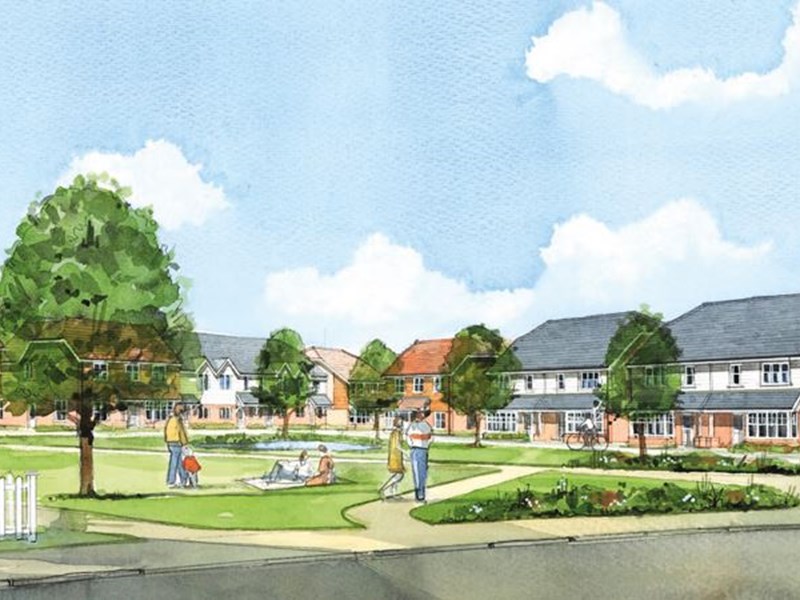TUNBRIDGE WELLS Borough Council [TWBC] has revealed a vision to create a joined-up ‘mixed community’ in Tunbridge Wells as part of their Local Plan.
Alongside a government-set requirement to build 692 homes every year up to 2033, the authority is looking to provide hundreds of shops and offices.
By creating employment and leisure -opportunities, Town Hall leaders want Tunbridge Wells to move away from its oft-cited commuter town image.
TWBC is consulting with Kent County Council about providing more school places and Southeastern about greater train capacity.
Their ambition is taking shape in the Draft Preferred Local Plan for 2013-2033, which is set to be revealed in early 2019. If it passes all relevant stages of approval, it would need to be approved by the Secretary of State from 2020.
Cllr Alan McDermott, Town Hall’s de-facto Deputy Leader, said: ‘We are ultimately looking for mixed and balanced communities.
‘It would be bad planning to have an area with one group of people-type.
‘People need nurses and gardeners, for example, and we need to have them here rather than coming in from outside. Really you need cheaper homes to achieve that.’
TWBC has been assigned by the government to build 13,840 homes from 2013-33. But of these, 6,000 ‘in the pipeline’ have already been completed or granted permission.
This includes the 1,000-home plan in Paddock Wood which has been approved by the council.
Five options are being considered as their strategy for how the target for their housing quota is met. These are:
1 Focused development on areas which have already seen construction, such as Southborough, Tunbridge Wells and Paddock Wood.
2 Semi-dispersed growth on specific rural areas.
3 Dispersed growth on rural settlements.
4 Creating a ‘growth corridor’ related to an improved A21.
5 A new ‘garden village’ style settlement.
The council has not yet announced which of these will be pursued or which areas in the borough could be built upon. More details will be revealed in January.
Cllr McDermott admitted that finding sites to build on in Tunbridge Wells has proved a ‘massive challenge’.
‘We have so many constraints, like the Green Belt, Areas of Outstanding Natural Beauty and areas liable to flooding.
‘Areas of Outstanding Natural Beauty you will never get back, whereas a Green Belt you can move. Everything has got to be considered.
‘If you rule out Green Belt and Areas of Outstanding Natural Beauty you are only left with 15 per cent of our land, which is not practical to build houses on.
‘A lot of the sites that are allocated at the moment are brownfield sites,’ he added. ‘Any brownfield sites could be included. Priority is brownfield first.’
The council has considered providing 30 per cent ‘affordable’ housing for every development, as part of national guidelines.
But with house prices so high across the borough, the council has found offering rentable property a more practical means to ensuring homes are available for all.
As important to the authority, though, is meeting the retail and economic need, and the following has been identified:
1 32,000 square metres of ‘comparison’ retail – which relates to more expensive, sometimes luxury items and white goods.
2 7,500-9,500 square metres of ‘convenience’ retail – offering typical supermarket items.
3 11 to 15 hectares of office and work space.
The council ha s not said how many offices or shops this could mean, but is conscious to move with the times as shopping trends change.
‘Shoppers are now looking for an experience,’ said Cllr McDermott. ‘You don’t just go there for the shops.
‘There will undoubtedly be changes to Royal Victoria Place under [new owners] British Land.
‘But importantly, for Tunbridge Wells to fulfil its economic potential, more space needs to be allocated for employment space.’
PICTURE: ON THE WAY UP The 1,000-home plan at Mascalls in Paddock Wood has been approved
Local Plan timeline: How the council will move forward
June 2017: Determine the issues and options with the Local Plan and develop draft strategy options.
March to April 2019: Consultation to draft a preferred Local Plan.
October 2019: Consultation to determine final Local Plan.
December 2019: Submission of the final Local Plan.
Spring 2020: The formal examination of the Local Plan will begin.








